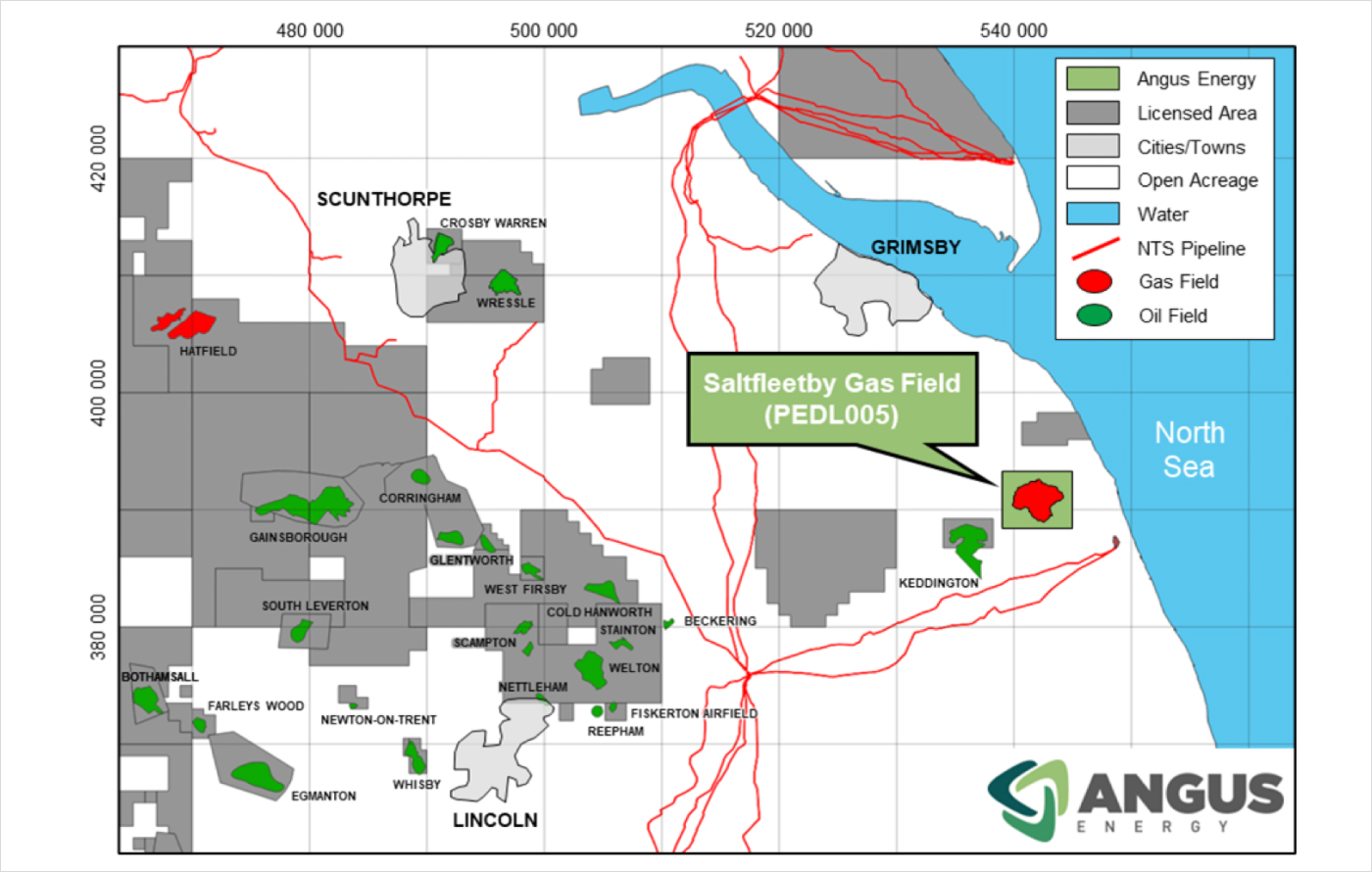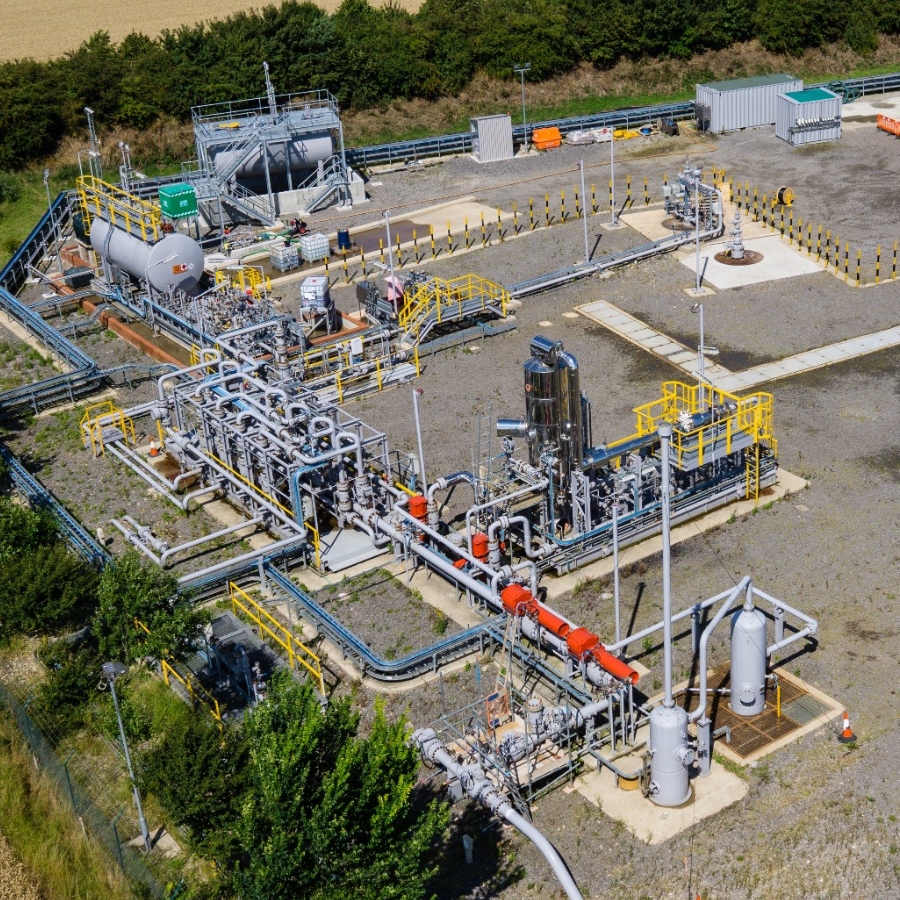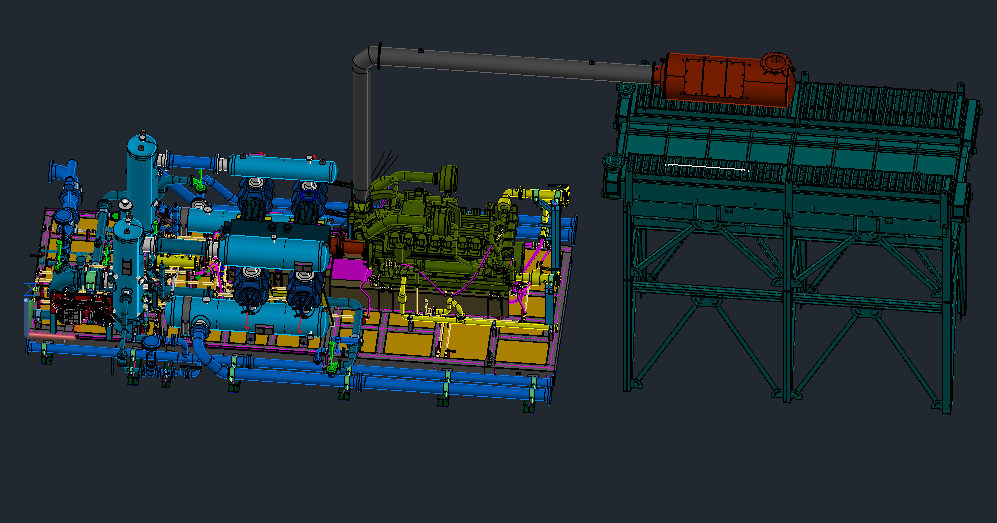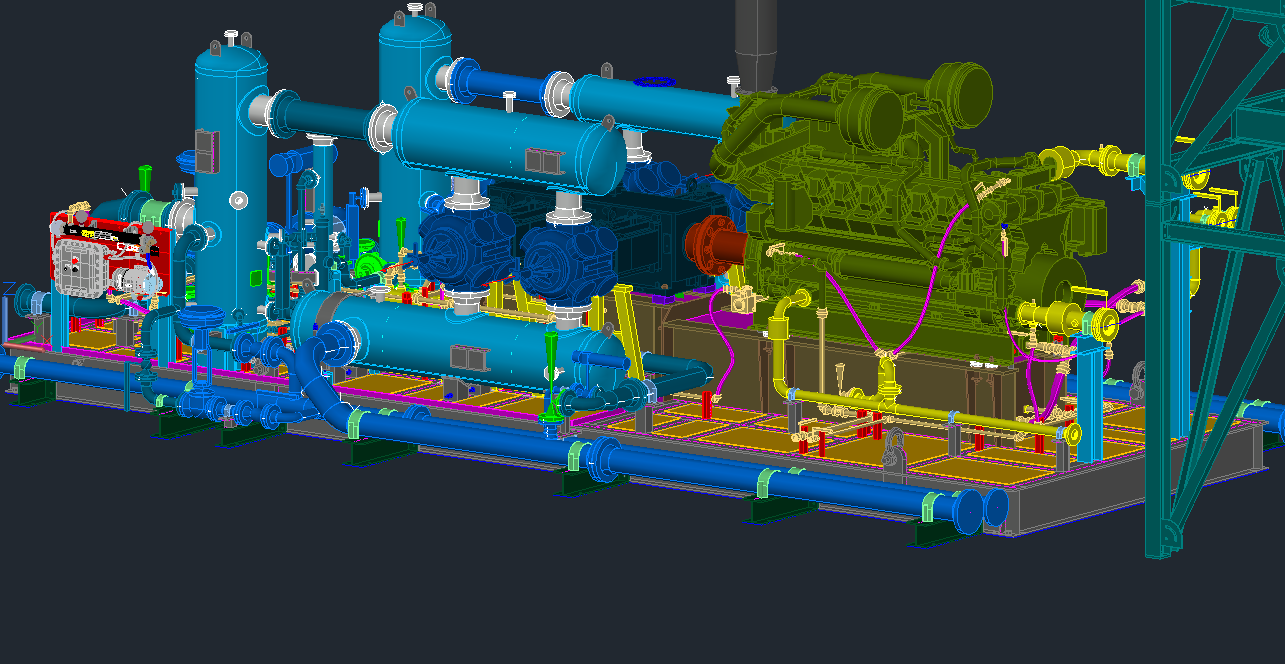The company’s key asset is Saltfleetby, discovered in 1996 and the largest onshore gas field in the UK with 114 BCF GIIP.

Production began in 1999, with a plateau of 50 mmscfd produced and processed into the National Grid via the North Sea Theddlethorpe Gas Terminal. Eight wells and multiple sidetracks have been drilled into the Westphalian and Namurian reservoirs in the field.
By the time the Theddlethorpe Terminal was shut down in 2018, forcing the closure of Saltfleeby, the field had produced 68 BCF gas and 1.1 mmbbls of condensate. This represents almost 60% of the initial gas in place.
Angus first acquired part of the Saltfleetby license in June 2019, followed by the remaining working interest in May 2022. A project to recommission the field, with the installation of 2 gas compressors, a condensate stabilisation unit and the drilling of a third producer as a sidetrack from the B7 well on the B wellsite was sanctioned in June 2021. A direct pipeline connection was established to the National Grid near Theddlethorpe.
- Licence
PEDL005 (TF38a, TF39a, TF48a, TF49a) - Licence Area
28.8km2 - Location
Lincolnshire - Operator
Angus Energy - Angus Interest
100% - Producing Wells
SF2, SF4, SF7

Production recommenced in August 2022, initially from 2 wells, B2 and A4 and subsequently, with a third well, B7, coming online from May 2023. Production in 2024 averaged 6.2 mmscfd.
Between August 2022, when Saltfleetby was brought back onto production, and July 2023, 2 bcf of gas were produced. A revised Competent Persons’ Report (CPR), published in October 2023, concluded that on a P50 basis, a further 27 BCF of reserves could be produced from the reservoir over the future life of the field. Since the report data set a further 3.5 BCF of gas have been produced, up to the end of 2024, indicating that there are about 23.5 BCF of remaining reserves in the field in December 2024. This would represent an ultimate recovery factor for the field of about 85%.
It is interesting to note that at gas prices prevailing in 2024 of 110p/therm, the gas reserves in Saltfleetby field have a market valuation of close to £267 million.
It is expected that production will increase further in the first quarter of 2025, with the installation of a booster compressor to compensate for the drop in reservoir and wellhead pressure as the field declines. The booster compressor allows the production separator to operate at lower pressures as it can process gas at significantly lower pressures than the existing compressors. The existing compressors have a minimum operating suction pressure of 17 barg whereas the booster compressor will operate at pressures as low as 4 barg.


This has two key benefits across the life of the field, with the first benefit being that flow rates will increase at current well head pressures, and the second being that flow rates will be sustained at the lower well head pressures we will see as the reservoir depletes.


This new compressor is now at Saltfleeby and is being connected and commissioned to allow Angus to produce the remaining volumes of gas in the reservoir to low abandonment pressures in the range of 3-4 barg.
Potential for further development of the field will be dependent on the outcome of a new subsurface model of the field, which is being developed during the course of 2024. An application has been made to Lincolnshire County Council for permission to drill up to 4 additional wells in the field, dependent on the results of the new geological modelling.
In addition, a memorandum of understanding has been signed with Trafigura, the commodity company, to evaluate mid / long term gas storage potential of the field and scope for CO2 storage through a dynamic reservoir model.


Saltfleetby technical overview
The Saltfleetby Gas Field is located in the Humber sub-basin, the onshore equivalent of the Southern North Sea gas basin. The field extends over 10 km2 and the gross sandstone sequence is approximately 60m thick.
The trap is a structural closure cut by a general NE-SW trending fault pattern. It is producing from Carboniferous sandstones which are buried over 2km below the surface.
The petroleum system at Saltfleetby is sourced by the underlying Bowland Shale, charging a reservoir of stacked river channel sandstones of Westphalian and Namurian age and sealed by overlying marine mudstones.

Saltfleetby is extensively covered by 3D seismic data, reprocessed in 2023 to allow Angus to effectively map the subsurface and plan future wells. The data were used to produce a new top reservoir structure map. Well petrophysics and correlations were also reevaluated and gas in place volumetrics were estimated from the geological model, in good agreement with the volumes derived from material balance estimations based on production history. Angus is building a new model of static reservoir properties, as well as modelling dynamic movement of fluids through the field, in order to determine the best location for new wells in the license and inform forward strategy.
